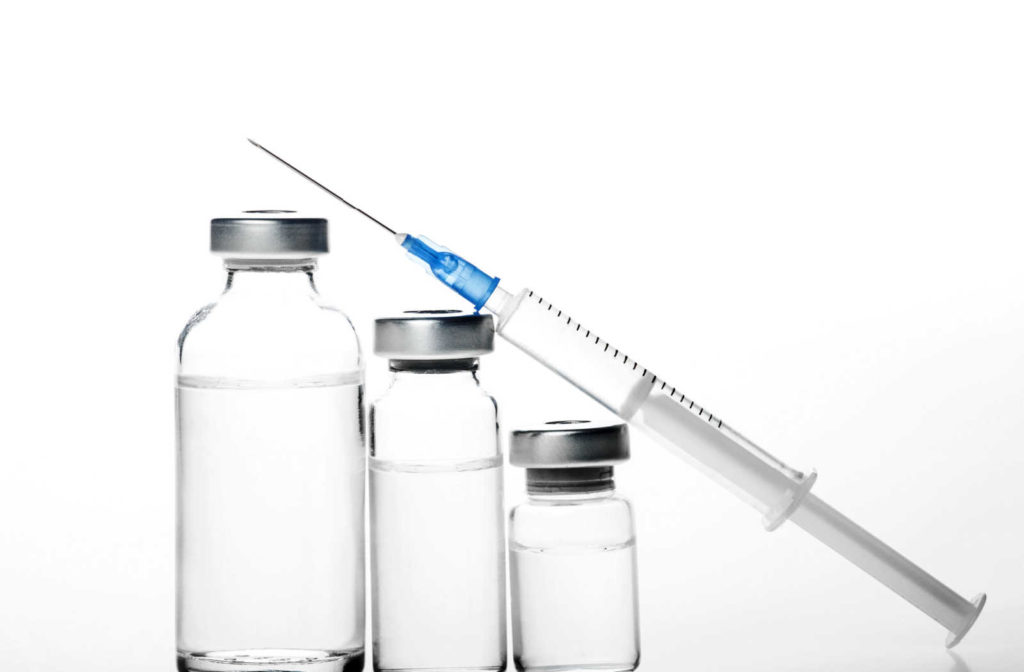Fine lines and wrinkles are inevitable, and although you can’t reverse the clock on aging, you can access treatments to smooth wrinkles, laugh or frown lines, and crow’s feet. Whether you have a special event and you want your skin to glow or want your skin to appear youthful year-round, neuromodulators like Botox and Dysport can improve your natural beauty.
Many people know Botox for their exceptional reputation as the go-to in treating fine lines, wrinkles, and more. But Dysport is a similar counterpart that’s lesser known. Both can restore radiance to your skin, but they have differences to consider before the treatment starts. Dysport is only approved for glabellar lines, while Botox can treat crow’s feet, frown lines, forehead wrinkles, laugh lines, and more.
What Are Neuromodulators?
A quick recap for those who love the science: Botox and Dysport are both neuromodulators. They block the connection between the nerve and muscles. Muscle contractions cause wrinkles, so neuromodulators temporarily shut that process down.
They’re derived from the same ingredient, Botulinum toxin A, but have slightly different molecular makeup. Some injectors use the analogy between Coke and Pepsi—they’re similar but distinct.
What Is Botox?
First introduced in 1989, Botox is still in widespread use today. Our injectors work with Botox frequently, from little facial touch-ups on glabellar lines (those stubborn vertical lines in the skin between your eyebrows) to smooth lip lines and more. Botox is also used therapeutically to manage medical and health conditions.
What Is Dysport?
Drawing on the same chemical makeup of Botox, Dysport is a variant that’s an FDA-approved treatment for moderate to severe glabellar lines. Dysport has a higher quantity of active toxin at 0.27 ng compared to Botox’s 0.18 ng concentration. This added strength in Dysport is just enough to give you a boost in noticeable results more quickly.
Similarities
These 2 neuromodulators have many features in common, but some of the most obvious include their indications, ingredients, and administration method.
- Indications: While there are some differences, Botox or Dysport can both offer positive outcomes for fine lines and wrinkles.
- Ingredients: Botulinum toxin A is the central active ingredient in both Botox and Dysport, with only slight variations.
- Injections: Both treatments are administered by localized injection, cause little pain, and the procedures last about 20 minutes or more with little to no recovery and no downtime needed.
Our injectors take great care to minimize potential side effects and offer at-home care tips. Some common side effects seen with both Dysport and Botox can include slight bruising, redness, and minor pain at the injection site.
Maintaining a nourishing skincare routine can help stimulate collagen production and support cell turnover. The injectors at Iconic Beauty Aesthetics can give you recommendations following an assessment of your skin. We also recommend you never leave home without applying sunscreen with SPF 30 or higher—an important skincare step whether you’ve had neuromodulators or not.

The Difference Between Botox & Dysport
At their essence, Botox and Dysport are a lot alike, but they’re not interchangeable. Depending on your imperfections and skin goals, the differences can significantly impact your neuromodulator selection.
Treatment Areas
Botox has been approved to treat a broader range of treatment areas, like the forehead, crow’s feet, laugh lines, and more, while Dysport is only approved for glabellar lines. However, while these are on-label uses, they have other benefits to take advantage of.
For instance, beyond aesthetic uses, Botox can also treat medical issues like excessive underarm sweating, chronic migraines, and muscle spasms. Dysport can be used to treat forehead lines, lip flip, and anything Botox can traditionally do, but because of its higher concentration, it can do it better.
Our clients love the outcomes of Dysport and our injectors prefer its vibrant results too. We’ll reach for Botox if you have a lactose allergy or want to take advantage of Botox’s therapeutic uses. Otherwise, we tend to use Dysport during facial treatments for nearly instant results.
Longevity
The effects of neuromodulators are temporary, and you need to maintain treatments for sustained results. Dysport typically lasts up to 3 to 4 months, similar to Botox, with some long-standing users noticing results up to 6 months. Your skin is unique, so individual cases can vary depending on factors like your age, gender, metabolism, dilution, placement, and dose.
It’s worth remembering that Dysport settles more quickly than Botox. While Dysport can settle in just 2 to 3 days, Botox can take 5 days or more to see the initial effects. But it can take up to 14 days for both Dysport and Botox to see complete results.
Is Botox or Dysport Better for You?
Ask the experts at Iconic Beauty Aesthetics about Botox and Dysport. These subtle differences matter; we want you to reap the greatest benefits from your neuromodulator treatments.
Visit our injectors for a skin consultation to discuss your goals and let our skincare-obsessed team educate you on injection options!